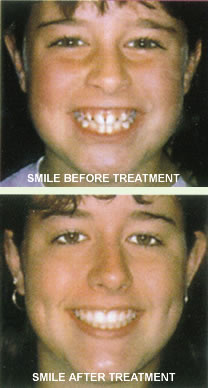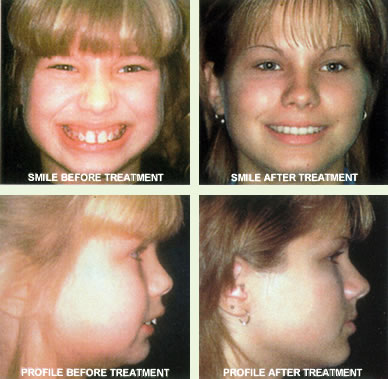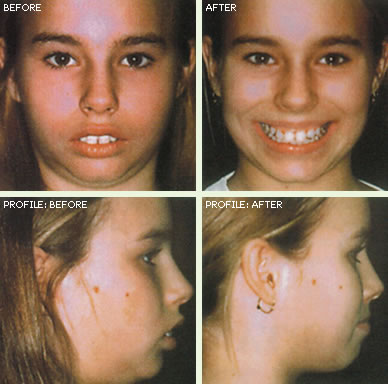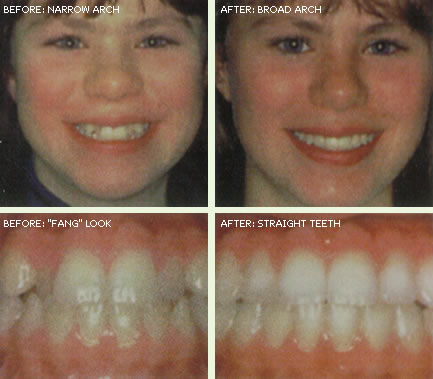Broad and beautiful smiles
Mouth breathing can cause narrow arches and unattractive smiles.By using functional appliances while children are actively growing, we can help them achieve a broad, beautiful smile.
Healthy jaw joints
Many children with narrow jaws, deep overbites or receding lower jaws have unhealthy jaw joints which can cause:
• Headaches
• Neck pain
• Dizziness
• Earaches or ringing in ears
• Fainting
• Clicking or locking jaws
• Difficulty opening jaws
The ability to breathe freely
Mouth breathing can lead to orthodontic problems as well as other problems, such as lack of oxygen and poor sleeping habits. This leaves children prone to daytime fatigue, and inability to concentrate in school and headaches.
Facilitated speech development
Narrow jaws can confine the tongue and interfere with normal speech.
Functional appliances help ensure proper growth and greatly enhance a child’s ability to speak normally.
Your support
Parents want the best for their children:
• Straight teeth
• Properly sized jaws
• Straight profiles
• And of course, beautiful smiles!
By treating problems early, you save money and may prevent the need for more extensive future treatment.
 An end to ear pain
An end to ear pain
Deep overbites and receding lower jaws may cause earaches, stuffiness or ringing in the ears.
If infection has been ruled out, functional appliances can eliminate these symptoms effectively.
Eliminate Crowding
Crowded teeth are caused by narrow arches. By developing the arches at an early age, we may prevent or eliminate the crowding of permanent teeth.
Functional appliances can correct:
• Bite problems
• Underdeveloped jaws
• Narrow arches
• Crowded teeth
• Deep overbites
• Jaw joint problems
• Airway problems
• Thumb sucking problems
… and often prevents:
• Removal of adult teeth
• Fang-like tooth appearance
• Lengthy use of braces
• Speech difficulties
• Crowding



Phase One
Functional appliances – Age 5 to 12Early treatment should be initiated for:
• Habits such as tongue thrusting and thumb sucking
• A constricted airway due to
swollen adenoids or tonsils
• Mouth breathing or snoring
• A bad bite
• Bone problems
(i.e. narrow or underdeveloped jaws)
Phase Two
Braces – ages 12 to 14
• Teeth are straightened with braces
• Braces usually take about 1.5
to 2 years
• Teeth are whitened
Facial development
75% of 12 year-olds need orthodontic treatment. Yet 90% of a child’s face has already developed! By guiding facial development early, through the use of functional appliances, 90% of the treatment can be corrected before the adult teeth are present!Cooperation
Younger children between the ages of 8 and 11 are often much more cooperative than children of 12 to 14.
Shorter treatment time
Another advantage of early Phase One treatment is that children will need to wear fixed braces on their adult teeth for less time.
 To correct underdeveloped jaws
To correct underdeveloped jaws
Almost 50% of children who needs orthodontic treatment due to a bad bite have underdeveloped lower jaws. Functional appliances can reposition the lower jaw forward, improve the child’s profile and correct the bite problem – within 7 to 9 months!
